10 results
Common Core SL.6.1 laboratories
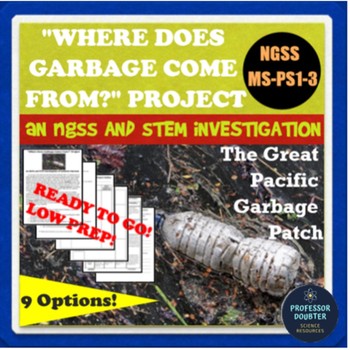
NGSS Synthetic and Natural Resources Investigation and STEM Project MS-PS1-3
This phenomena-based, low prep and engaging NGSS and STEM Investigation and Project teaches middle school students that synthetic materials come from natural resources and impact society in various ways MS-PS1-3. This incredible activity has been newly updated as a digital PDF with worksheets for home or distance learning! Students are presented with the phenomenon of floating garbage in the sea through a video clip and investigate one of several listed materials in the trash to ultimately learn
Subjects:
Grades:
5th - 9th
Types:
NGSS:
MS-PS1-3
Also included in: NGSS Middle School Science Activities and Lessons Growing MEGA Bundle

Exploring Groundwater and Aquifers (NGSS MS-ESS3-1) (5E Model Explore & Explain)
Develop student understanding of the distribution of groundwater resources (and their limited nature) by analyzing data and designing and participating in an engineering design challenge in which they design and construct an aquifer. In this lesson, students understand why groundwater isn’t found just anywhere and realize the importance of this limited resource. In this activity, students will:map the distribution of groundwaterdesign and construct an aquifer to understand how they work and what
Subjects:
Grades:
6th - 8th
Types:
NGSS:
MS-ESS3-1
, MS-ESS2-4
Also included in: The Water Cycle - 5E & NGSS MS-ESS2-4 & MS-LS2-1

Porosity, Permeability, and Structure Of Aquifers (NGSS MS-ESS3-1)
In this 5E Model Explore-Explain activity sequence, students will explore the structure of aquifers. First, they will investigate porosity and permeability to understand how Earth’s sediments affect the availability of groundwater - its ability to be stored, flow, and be accessed by humans. Then, they will use data from well logs to create a visual model of the structure of an aquifer, drawing conclusions about the flow of groundwater in the aquifer, the impacts of land use, and the overall qual
Subjects:
Grades:
6th - 8th
Types:
NGSS:
MS-ESS3-1
, MS-ESS2-4
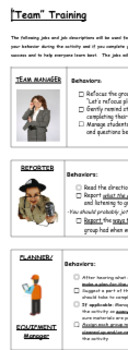
Group Work Job Assignments and Student Group Work Self-Evaluation Sheet
Encourage active collaborative work in groups with job assignments. Each person in the group can select or you can assign a job so students are working together and avoid the partner that does not work. Then, use the "Student Self-Evaluation" sheet to allow students to reflect on how successful they were as a participant in a group. This can lead to more active participation in collaborative work!
Grades:
4th - 8th
Types:
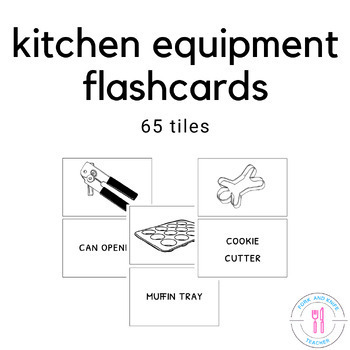
Kitchen Equipment Word Wall or Flashcards - 65 items
Do you need a diverse set of kitchen equipment flash cards with vocabulary attached? These crisp black and white drawings help your kitchen be an inclusive environment to readers and non readers?This package compiles over 60 items which are small wares, bake ware and cooking tools. These tiles are also something I have used as a large Memory Game by dividing the picture and text from each other. bakers scaleportion scalezesterwooden spoonmalletoffset spatulacookie cutterladledigital scalecoland
Subjects:
Grades:
7th - 10th
Also included in: Kitchen Equipment BUNDLE (Family and Consumer Science, FACS, FCS)
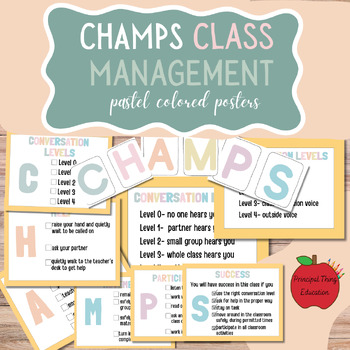
CHAMPS Behavioral Model Posters | Conversation Level | Classroom Management
No teacher wants to wear the "unruly class" badge. The CHAMPS system(created by Randy Spricks) has been a successful behavior management tool in many school districts. Establish classroom structure with these CHAMPS classroom management posters! What's Inside:9 pages in one PDFGuide on printing6 expectation pages (CHAMPS acronym)2 conversational level pagesHow to UsePrint on card stock, laminate for durabilityAdd magnets for easy whiteboard useUse dry erase Markers to indicate conversation leve
Grades:
3rd - 6th, Staff
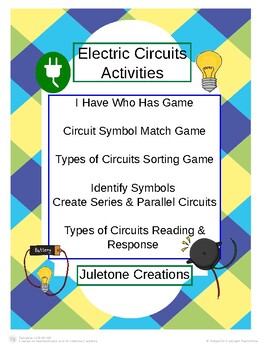
Distance Learning Electric Circuit Activites
Electric Circuits activities are a great supplement to the Electricity Unit. Reading and response worksheet is used to review concepts about open closed, series, and parallel circuits. I Have, Who Has cards provide a fun way to reinforce vocabulary and main concepts of the unit. Posters and smaller cards match symbols to the parts of electric circuits are a great way to introduce circuitry. Practice reading diagrams with the worksheet, then follow the directions to build several series and paral
Subjects:
Grades:
3rd - 6th
Types:
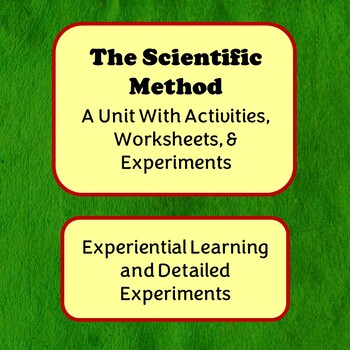
Scientific Method Lab: Hands-On Science Experiments
A project-based unit to teach third, fourth, fifth grade and homeschool students the Scientific Method through a variety of activities.Students learn the steps of the scientific method and scientific processes as they systematically work through guided experiments and present their findings in a worksheet form. Complete start to finish step-by-step instructions are included for two experiments.This unit includes:- Colored and blackline copies of scientific method posters- Step-by-step teacher
Subjects:
Grades:
3rd - 5th

Soil Science: Water Drainage Rate and Presentation
An interactive lesson for students to conduct research, observation, and inferences. Students will better understand how sand, silt, and clay affect the rate of water drainage from soil, and the importance of soil drainage. They should be able to relate soil texture to soil drainage after research, and identify which soil is best. Students will work collaboratively together to research and create a Google Slide presentation to convey experiment results.
Subjects:
Grades:
4th - 9th
Types:

Chemical Digestion Lab
The stomach is the location where both chemical and mechanical digestion takes place. The contents of your stomach are very acidic. This acidic environment also makes the food into smaller and smaller pieces; this is an example of chemical digestion. In this lab students examine chemical digestion. They will use bile salts, vinegar (a strong acid), saliva, and meat tenderizer to see which one has the most effect on digestion of proteins and fats. Pre- lab and post lab questions and a table to
Grades:
3rd - 6th
Types:
Also included in: Distance Learning Human Body Systems
Showing 1-10 of 10 results

